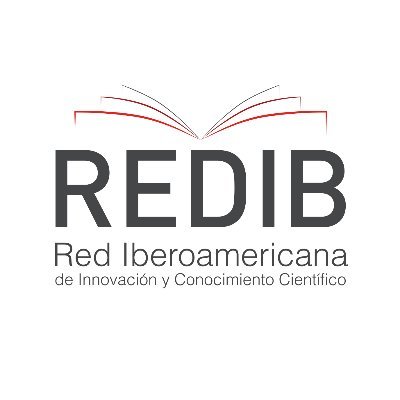Attitudes towards the educational inclusion of people with Special Educational Needs in future teachers
relationships with empathy and contact
Keywords:
Special Educational Needs, SEN, Teachers, Empathy, ContactAbstract
Different studies have addressed the study of teachers' attitudes towards educational inclusion, observing different factors and variables that determine them. However, despite the fact that many studies suggest that teachers, in general, have a positive attitude towards the idea of inclusion, this would be related both to their levels of empathy and previous contact with groups with different types of disabilities. This study aims to explore the beliefs that teachers in training have about students with Special Educational Needs (SEN) and analyze whether there are differences according to gender, levels of empathy and contact with people with some type of disability. For this purpose, 262 students of the University Master's Degree in Special Educational Needs and Early Intervention, aged between 24 and 50 years, of both gender. The main results indicated that only in some beliefs related to SEN were differences according to gender found, but not in the majority. In addition, significant relationships were observed between attitudes towards educational inclusion and empathy levels of the participants. Finally, differences were observed between the levels of contact and the different types of disabilities. The main results are discussed in the light of previous studies.
References
Abbott, S. y McConkey, R. (2006). The barriers to social inclusion as perceived by people with intellectual disabilities. Journal of Intellectual Disabilities, 10(3), 275-287. https://doi.org/10.1177/1744629506067618
Allport, G. (1954). The nature of prejudice. Addison-Wesley.
Amaro Agudo, A., Martinez-Heredia, N. y Gonzalez-Gijon, G. (2019). Análisis de la competencia profesional en formación inclusiva del alumnado del ultimo curso del grado de infantil y primaria de la universidad de granada, España. Interciencia, 44(8), 489-494. https://www.redalyc.org/journal/339/33960960009/html/
Arnaiz Sánchez, P. (2019). La educación inclusiva en el siglo XXI. Avances y desafíos. Servicio de publicaciones de la Universidad de Murcia. https://www.um.es/documents/1073494/11766712/Leccioon-Santo-Tomas-2019-Pilar+Arnaiz.pdf/e58361e5-5cf0-4ac1-991e-0b6eaf89638b
Azorín Abellán, C. (2017). Análisis de instrumentos sobre educación inclusiva y atención a la diversidad. Revista Complutense de Educación, 28(4), 1043-1060. https://doi.org/10.5209/RCED.51343
Azorín, C. M. y Ainscow, M. (2020). Guiding schools on their journey towards inclusion. International Journal of Inclusive Education, 24(1), 58-76. https://doi.org/10.1080/13603116.2018.1450900
de Boer, A., Jan Pijl, S. y Minnaert, A. (2012). Students' Attitudes towards Peers with Disabilities: A review of the literature. International Journal of Disability Development and Education, 59(4), 379-392. https://doi.org/10.1080/1034912X.2012.723944
Brandes, J. y Crowson, M. (2009). Predicting dispositions toward inclusion of students with disabilities: The role of conservative ideology and discomfort with disability. Social Psychology of Education, 12(2), 271-289. https://doi.org/10.1007/s11218-008-9077-8
Branwhite, T. (1988). The PASS survey: School-based preferences of 500+ adolescent consumers. Educational Studies, 14(2), 165–176. https://doi.org/10.1080/0305569880140204
Brownlee, J., y Carrington, S. (2000). Opportunities for authentic experience and reflection: A teaching program designed to change attitudes towards disability for pre-service teachers. Support for Learning, 15, 99-105. http://dx.doi.org/10.1111/1467-9604.00157
Cook, B., Tankersley, M. y Landrum, T. (2009). Determining Evidence-Based Practices in Special Education. Exceptional Children, 75(3), 365-383. https://doi.org/10.1177/001440290907500306
Davis, M. H. (1983). Measuring individual differences in empathy: Evidence for a multidimensional approach. Journal of Personality and Social Psychology, 44(1), 113–126. https://doi.org/10.1037/0022-3514.44.1.113
De Haro Rodríguez, R., Ayala de la Peña, A. y Del Rey Gil, M. (2020). Promoviendo la equidad en los centros educativos: identificar las barreras al aprendizaje y a la participación para promover una educación más inclusiva. Revista Complutense de Educación, 31(3), 341-352. https://dx.doi.org/10.5209/rced.63381
Folsom-Meek, S. y Rizzo, T. (2002). Validating the Physical Educators' Attitude Toward Teaching Individuals with Disabilities III (PEATID III) survey for future professionals. Adapted Physical Activity Quarterly, 19(2), 141-154. https://doi.org/10.1123/apaq.19.2.141
Fredrickson, B. L., y Carstensen, L. L. (1990). Choosing social partners: How old age and anticipated endings make people more selective. Psychology and Aging, 5(3), 335-347. https://doi.org/10.1037/0882-7974.5.3.335
García-Segura, S. y Ruíz Garzón, F. (2020). Retos actuales de la educación inclusiva y la comunidad educativa. Voces de la Educación, 5(10), 3-12. https://www.revista.vocesdelaeducacion.com.mx/index.php/voces/article/view/172
Gelbar, N., Shefcyk, A. y Reichow, B. (2015). A Comprehensive Survey of Current and Former College Students with Autism Spectrum Disorders. The Yale journal of biology and medicine, 88(1), 45-68. https://www.ncbi.nlm.nih.gov/pmc/articles/PMC4345538/pdf/yjbm_88_1_45.pdf
Good, T. y Brophy, J. (1986). School effects. En Wittrock, M. C. (ed.) Handbook of research on teaching (3 ed., pp. 570-602). Macmillan.
Greenwald, A. G., y Banaji, M. R. (1995). Implicit social cognition: Attitudes, self-esteem, and stereotypes. Psychological Review, 102(1), 4–27. https://doi.org/10.1037/0033-295X.102.1.4
Harvey, L. y Green, D. (1993). Defining quality. Assessment and Evaluation in Higher Education, 18(1), 9-34. https://doi.org/10.1080/0260293930180102
Hodge, S., Ammah, J., Casebolt, K., Lamaster, K., Hersman, B., Samalot-Rivera, A., y Sato, T. (2009). A Diversity of Voices: Physical education teachers’ beliefs about inclusion and teaching students with disabilities. International Journal of Disability, 1(4), 401-419. https://doi.org/10.1080/10349120903306756
McDougall, J., DeWit, D., King, G., Miller, L. y Killip, S. (2004). High School‐Aged Youths' Attitudes Toward their Peers with Disabilities: the role of school and student interpersonal Factors. International Journal of Disability, Development and Education, 51(3), 287-313. https://doi.org/10.1080/1034912042000259242
Mitchell, P. (2014). Global education for collaborative practice. Nursing and Health Policy Perspectives, 61(2), 157-158. https://doi.org/10.1111/inr.12108
Moriña, A., Sandoval, M., y Carnerero, F. (2020). Higher education inclusivity: when the disability enriches the university. Higher Education Research & Development, 39(6), 1202-1216. https://doi.org/10.1080/07294360.2020.1712676
Murillo, F. J. y Duk, C. (2017). El ODS 4 (y el 16) como meta para los próximos años. Revista Latinoamericana de Educación Inclusiva, 11(2), 11-12. https://doi.org/10.4067/S0718-73782017000200001
Pettigrew, T. F., y Tropp, L. R. (2006). A meta-analytic test of intergroup contact theory. Journal of Personality and Social Psychology, 90(5), 751-783. https://doi.org/10.1037/0022-3514.90.5.751
Rodríguez-Martín, A. (Comp.) (2017). Prácticas Innovadoras inclusivas: retos y oportunidades. Universidad de Oviedo. https://digibuo.uniovi.es/dspace/bitstream/handle/10651/50212/PersonasMayores.pdf;jsessionid=759C0C1C9ED3EEB44D2B6E3ACEFCD109?sequence=4
Saloviita, T. (2015). Measuring pre-service teachers' attitudes towards inclusive education: Psychometric properties of the TAIS scale. Teaching and Teacher Education, 52, 66-72. https://doi.org/10.1016/j.tate.2015.09.003
Seo, W. y Chen, R. K. (2009). Attitudes of college students towards people with disabilities. Journal of Applied Rehabilitation Counseling, 40(4), 3-8. https://doi.org/10.1891/0047-2220.40.4.3
Tait, K. y Purdie, N. (2000). Attitudes Toward Disability: Teacher education for inclusive environments in an Australian university. International Journal of Disability, 47(1), 25-38. https://doi.org/10.1080/103491200116110
Tettegah, S., y Anderson, C. J. (2007). Pre-service teachers' empathy and cognitions: Statistical analysis of text data by graphical models. Contemporary Educational Psychology, 32(1), 48-82. https://doi.org/10.1016/j.cedpsych.2006.10.010
Tiwari, A., Das, A. y Sharma, M. (2015). Inclusive education a “rhetoric” or “reality”? Teachers' perspectives and beliefs. Teaching and Teacher Education, 52, 128-136. https://doi.org/10.1016/j.tate.2015.09.002
Organización de las Naciones Unidas (1994). Declaración de Salamanca. UNESCO.
UNESCO (2015). Replantear la educación ¿Hacia un bien común mundial? UNESCO.
Unianu, E. M. (2012). Teachers’ attitudes towards inclusive education. Procedia-Social and Behavioral Sciences, 33, 900-904. https://doi.org/10.1016/j.sbspro.2012.01.252
Yuker, H. E. (1994). Variables that influence attitudes toward people with disabilities: Conclusions from the data. Journal of Social Behavior & Personality, 9(5), 3-22.
Published
How to Cite
Issue
Section

This work is licensed under a Creative Commons Attribution-NonCommercial-ShareAlike 4.0 International License.
The authors who publish in this journal accept the following conditions:
1. The authors retain the copyright and assign to the journal the right to first publication, with the work registered under the Creative Commons Attribution license, which allows third parties to use what has been published as long as they mention the authorship of the work and the first publication in this journal.
2. Authors may make other independent and additional contractual agreements for non-exclusive distribution of the version of the article published in this journal (e.g., inclusion in an institutional repository or publication in a book) provided that they clearly indicate that the work was first published in this journal.
3. Authors are permitted and encouraged to publish their work on the Internet (e.g., on institutional or personal pages) before and during the review and publication process, as this may lead to productive exchanges and greater and faster dissemination of published work (see The Effect of Open Access).









